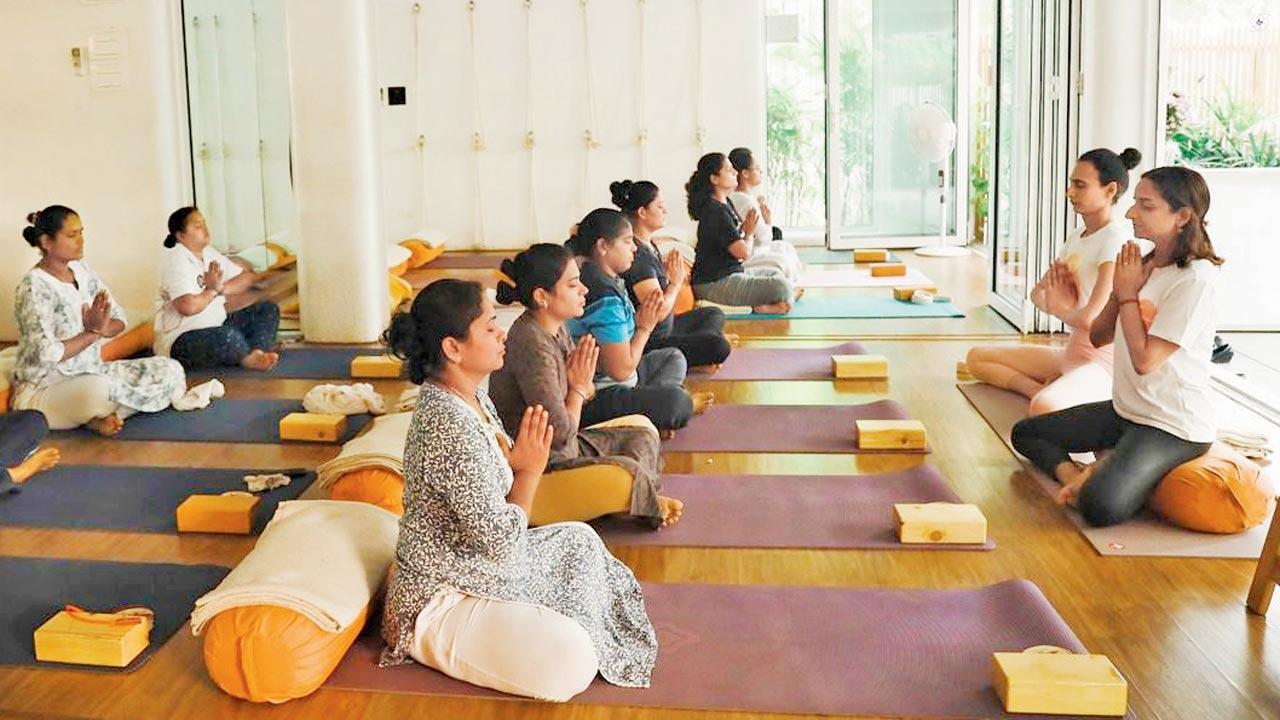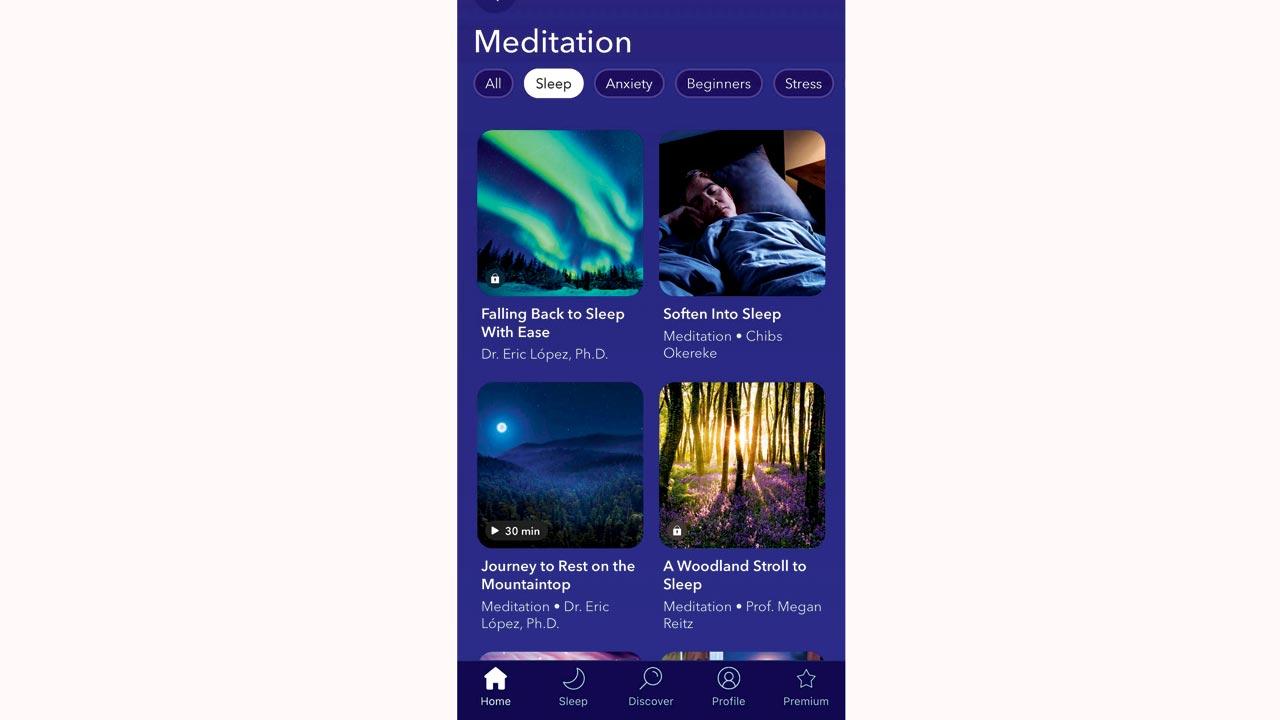On World Meditation Day today, experts and coaches share their tips for urban professionals to find a moment of calm amidst the hustle

Representational image. Pic/iStock
Have you ever felt like your brain has too many unmanageable tabs open? You’re scrolling through social media and work emails mindlessly and calls are buzzing, and it’s all set to the background score of that catchy tune from the latest viral reel. By the time you’re ready to hit the sack, it’s too late to pause and find a way out of the cycle.
ADVERTISEMENT
 Activities like gardening can also be a form of meditation; (right) Practising slow guided breathing through pranayam can relieve work-related stress. Representation pics
Activities like gardening can also be a form of meditation; (right) Practising slow guided breathing through pranayam can relieve work-related stress. Representation pics
In a world that is constantly connected, achieving a sense of calm can feel impossible. Could meditation, the art of doing seemingly nothing, be the way to hit the pause button and reflect?
Do it your way
 Schedule time between your meetings for short sessions
Schedule time between your meetings for short sessions
I suggest meditation to working professionals simply because it fixes the root problem of being emotionally volatile. Meditation allows you to stay anchored instead of being thrown into panic in the face of stressors at work. It contributes to a more regulated mood and nervous system, which enhances overall emotional regulation. This gives way to better focus and attention spans and hence, enables you to finish tasks more smoothly.
. Myth, busted: Meditation doesn’t have to look a particular way. For example, gardening, pottery, or any activity engaging your senses, done mindfully and with awareness, can be a form of meditation. The key is to be present in the activity itself, rather than letting your mind wander.
. Quick tip: Incorporate micro-meditations into your daily routine during breaks or between meetings. These are short, focused sessions that can be done in just a few minutes. Basic breathing practices, commonly known as pranayama, can be very effective. Simple techniques like deep breathing or alternate nostril breathing can help reset your mind and reduce stress. If sitting still feels challenging, try a walking meditation during a break. Focus on the sensation of your feet touching
the ground.

Akshada Anikhindi, mental health practitioner and founder, ThoughtSpace
Ease into it
 Tanvi Mehra conducts a wellness session. Pic Courtesy/Instagram
Tanvi Mehra conducts a wellness session. Pic Courtesy/Instagram
People who practise meditation regularly are more in touch with their higher states of mind, and can tap into their innate clarity, stability, and positivity. They function less from their lower states of minds and hence, slowly but surely, move away from pessimism, judgement, irritation and ego-driven responses
and reactions.
. Myth, busted: People think they need an hour or 90 minutes to meditate. The thought of sparing so much time to something that already seems daunting can really demotivate them. You can start by meditating daily for two minutes, then five, and 10 minutes. This practice, even if for a few minutes daily, adds up to a lot.
. Quick tip: Every day, assign a time where you can set your phone aside. Take a couple of moments to witness the natural breath flow in the present moment until you feel at one with your breath, and time slows down. Once you feel more connected to yourself, continue with the routine. All it takes is awareness and a willingness to make it a habit.

Tanvi Mehra, yoga-trainer and founder, Tangerine Arts Studio
Follow the vibe
 A sound bath session in progress at Shrutika Rao’s studio
A sound bath session in progress at Shrutika Rao’s studio
One of the biggest long-term benefits or results of meditation that I’ve observed among the younger and urban participants is that one becomes extremely self-assured.
It first begins with just a sense of feeling grounded and comfortable in the present moment, and with uncertainty. When people realise that their reactions to stress are causing them more harm than the stressor itself, it unlocks a new level of self-confidence.
. Myth, busted: Meditation cannot have an agenda. Don’t aim to “mediate well” and gain something quantifiable out of it. Avoid trainers and sessions that focus on short-term rewards. Meditation is simply being in the present, doing things without immediate goals. It’s like trying to sleep; the harder you try, the more you stray from the path.
. Quick tip: For those who can take time out occasionally, sound baths can be extremely beneficial. Vibrations work on a subtle level. When we’re stuck in the complexities of the mind, we need something subtle to permeate our mental state. We use seven bowls tuned to the seven notes that resonate in a way that leads to relaxation first, followed by deep relaxation — a state where your body and mind are both in a state of relaxation.
Shrutika Rao, meditation coach and founder, Om Shala Wellness
Beginners’ notes

. It’s perfectly normal for the mind to wander or get carried away with worry, anxiety or fear. Instead of fighting it, gently bring your focus back to the present moment.
. Avoid coaches and sessions that promise instant gratification. Meditation is not a pathway to pleasure.
. If you feel out of place at your first session, look for another style; instead of considering yourself unfit for the practice.
. Make sure meditation is an enjoyable part of your routine by choosing the method that suits you. Set small goals and slowly raise your intensity levels.
Shrutika Rao and Akshada Anikhindi
App’s the way
 Calm app
Calm app
. Headspace: Offers evidence-based meditations that are easy, and covers a variety of topics, from stress relief to sleep.
. Calm: Known for its soothing meditations and sleep stories, it is perfect for unwinding after a long day.
. Insight Timer: Features a vast library of guided meditations from different teachers, making it easy to find something that suits your mood.
. Mindfulness exercises by Sean Fargo: Find resources like quick exercises and guided meditation sessions.
LOG ON TO App stores
 Subscribe today by clicking the link and stay updated with the latest news!" Click here!
Subscribe today by clicking the link and stay updated with the latest news!" Click here!







